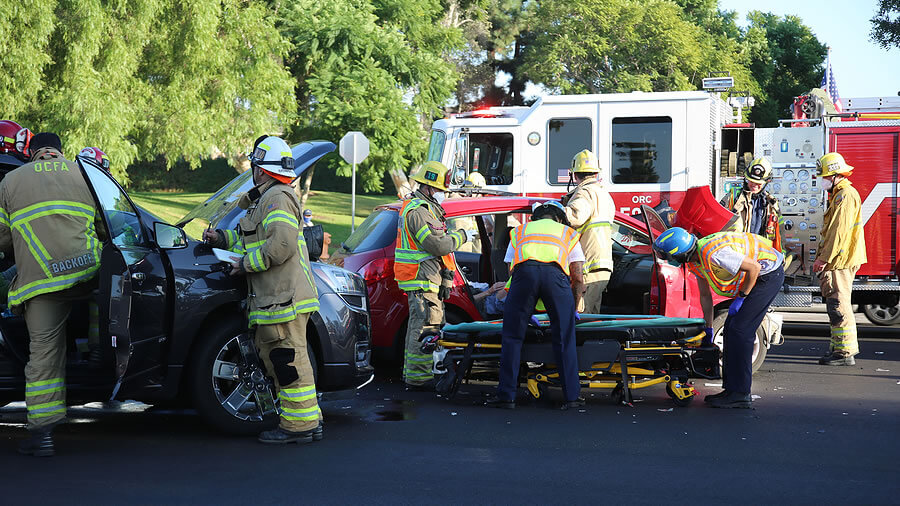Why Car Collision Injuries Are Not a Quick Fix
Recently, a patient involved in a motor vehicle collision quit care after just eight visits. His reasons? He said he was working too much and wasn’t feeling better. I sympathize with his frustration. The body heals slowly from car collision injuries.
I wrote this article to help you and your loved ones understand why healing from car collision injuries takes time and to inspire you to be patient with your body; give it time to heal.
Motor Vehicle Collisions Tend To Be Traumatic
Imagine you are sitting in traffic on I-5 wearing your seatbelt like you should be, when whammo, a vehicle traveling 30 – 45 + miles per hour rear-ends you. Because you’re wearing your seatbelt, the belt’s locking mechanism abruptly stops the forward movement of your torso. But, your head and neck are not constrained. They whip forward and backward.
Whiplash
Here’s the kicker – the segments of your neck don’t move equally or simultaneously. The head and neck whip backward then forward in an S-shaped motion. This leads to all kinds of trouble. Some ligaments are overstretched, others are compressed, and the facet joints are compressed. The quick whiplash motion causes ligaments, tendons, and muscles to tear. The technical term for the whipping action of whiplash is a Cervical Acceleration / Deceleration injury.
Healing from Car Collision Injuries
In a car collision, all joints are stretched and then compressed – stretching and tearing muscles, tendons, and ligaments – resulting in sprains and strains.
- Mild sprains can take up to six weeks to heal
- Severe sprains can take up to a year to heal – if they ever fully heal
- Strains, including neck, mid-back, low back, and pelvis strains, heal quicker than ligament injuries. Strains involve muscles and tendons – both have a better blood supply than ligaments. Blood provides the nutrients and oxygen necessary for healing.
- Ligaments have a low blood supply. Be patient with your ligaments. They will take longer to heal than strains and mild sprains
Existing Health Conditions Can Complicate or Slow Healing from a Car Collision
Let’s say you have pre-existing arthritic changes such as degenerative disc disease, degenerative joint disease, rheumatoid arthritis, or even auto-immune arthritic changes. Bony and disc degeneration alter spinal biomechanics and your spine’s ability to absorb an outside impact. For patients with rheumatoid arthritis and other auto-immune diseases, often connective tissues are already compromised, making the road to recovery more complex.
Concussions
In short, a concussion is brain bruising. It’s relatively common for car collision patients to sustain a concussion. Adding a concussion into the mix can be a game-changer.
Concussion symptoms can include
- Headache
- Dizziness
- Nausea
- Personality changes
- Emotional changes
- Increased fatigue
- Anxiety
- Double vision
- Sensitivity to lights and sounds
- And other symptoms
If you injure your brain, the rest of your body will not work as well.
Chiropractic Treatment for Car Collision Patients
My focus as a chiropractor is to
- Mobilize and restore injured joints
- Help remodel scar tissue
- Improve neural function
Scar tissue is laid down as a natural part of healing from micro-tearing of the joint capsules, ligaments, tendons, and muscles. Scar tissue acts like glue in the joints. In addition to scar tissue, new blood vessels and nerve endings infiltrate the area. The new nerve endings tend to be extraordinarily pain-sensitive. Chiropractic adjustments help break up the cross fibers of the scar tissue, helping to restore motion and control the new pain fibers before they become overactive. Depositing scar tissue is a natural part of the healing process, and we want to make it work more efficiently with normal healthy tissue. This remodeling and healing process takes time.
As an experienced chiropractic patient, you know that chiropractic adjustments help restore healthy nerve function. Stimulating nerve pathways can alter the pain felt by a car accident patient. When a chiropractic adjustment is applied, pressure receptors in the skin are stimulated and quickly send messages to the brain, interrupting the pain signals sent to the brain. It’s essential to repeat the chiropractic adjustments frequently to help shut the pain gates.
Is There A Quick Fix for Car Collision Injuries?
Injuries sustained from motor vehicle collisions are rarely a quick fix. Your chiropractic treatments are designed to
- Restore motion to restricted joints
- Break up and remove adhesions
- Interrupt new pain pathways and reinforce healthy ones
All of this is doable. And, working naturally with your body takes time. The rate at which your body heals is unique to you.
If you or a loved one is injured in a car collision, seeking chiropractic care is a must. Be patient; it will take time for your body to heal.
Contact our Federal Way chiropractic office today to learn more and schedule an appointment.

